We're here to help throughout the COVID-19 issue. Read More..
No hidden fees. No obligation.


Do Raccoons Travel In Packs?
February 9, 2020 by Marcus Mueller
Do Raccoons Truly Live by Themselves?
What is the size of these groups, i think i have raccoons in my home. how bad can it get, call skedaddle for raccoon removal in milwaukee.
- Assess and Remove. Our technicians identify the number of raccoons and assess the degree of the problem. We analyze the risk of rabies (hard for an untrained eye) and humanely and strategically remove all mothers, babies and males. The mothers and babies are reunited in a heated baby box, far from your home.
- Clear and Clean Any Mess. We handle professional removal of raccoon feces and contamination (roundworm).
- Prevent and Protect. We identify entry points and permanently block raccoons from entering your home. We can install heavy-gauge screening at all potential entry points and advise and consult for insulation repair and attic restoration.
DON'T FORGET TO SHARE THIS POST!
Did you find this blog useful.
About the author:
Connect with the author via: LinkedIn

About the author: Marcus is the owner and operator of Skedaddle Humane Wildlife Control – Milwaukee. Born and raised in Milwaukee, Marcus combines the academic training (M.S. Wildlife Biology, UW Madison) with the field training and skills to be successful in resolving wildlife conflict for home and business owners. Part of this field experience was working as an intern at a local wildlife rehabilitation center where Marcus interacted with Milwaukee residents experiencing conflict with wildlife on a daily basis. These interactions pushed Marcus to bring these needed services to Milwaukee and officially launch Skedaddle Humane Wildlife Control – Milwaukee!
Main Categories
- Raccoons (537)
- Squirrels (401)
- Birds (176)
- Skunks (254)
- Prevent and Protect (135)
- Clear and Clean (13)
- Animals and Your Health (39)
- Wildlife Babies (34)
- Anne Arundel (28)
- Anoka County (19)
- Barrie (41)
- Bowmanville (14)
- Calvert County (19)
- Coquitlam (136)
- Durham (88)
- Etobicoke (16)
- Halifax (2)
- Hamilton (59)
- Hennepin County (19)
- Kitchener/Waterloo (43)
- Madison (145)
- Markham (39)
- Milwaukee (332)
- Minneapolis (22)
- Mississauga (9)
- Montreal (52)
- Newmarket (39)
- Niagara (41)
- North York (23)
- Oakville (47)
- Okanagan Valley (75)
- Oshawa (72)
- Ottawa (37)
- Peterborough (1)
- Pickering (64)
- Rexdale (20)
- Richmond Hill (36)
- Scarborough (22)
- Sudbury (3)
- Toronto (27)
- Vaughan (38)
- Victoria (78)
- Waukesha (32)
- Whitby (70)
- York Region (31)
- May (31)
- April (47)
- March (40)
- February (39)
- January (42)
- December (45)
- November (47)
- October (37)
- September (33)
- August (37)
- July (26)
- June (30)
- April (30)
- March (29)
- February (28)
- January (26)
- December (31)
- November (30)
- October (31)
- September (28)
- August (36)
- July (40)
- June (38)
- May (49)
- April (26)
- March (43)
- February (35)
- January (33)
- December (37)
- November (59)
- October (39)
- September (34)
- August (33)
- July (43)
- June (33)
- May (37)
- April (27)
- March (20)
- January (31)
- November (24)
- September (30)
- August (17)
- July (12)
- June (18)
- May (23)
- March (19)
- February (17)
- December (28)
- November (15)
- October (21)
- September (23)
- August (20)
- July (22)
- June (22)
- May (19)
- March (27)
- February (27)
- January (22)
- December (24)
- September (29)
- August (30)
- July (31)
- May (9)
- April (13)
- March (13)
- February (31)
- January (5)
- December (13)
- November (9)
- October (9)
- September (4)
- August (12)
- May (12)
- April (12)
- March (24)
- February (3)
- January (1)
- December (2)
- November (1)
- October (13)
- September (44)
- August (31)
- July (3)
- June (5)
- May (8)
- April (10)
- February (10)
- January (18)
- December (19)
- October (4)
- August (2)
- July (1)
- May (5)
- April (3)
- March (6)
- February (4)
- October (3)
- September (3)
- July (5)
- June (3)
- March (4)
- February (8)
- January (4)
- December (1)
- October (2)
- September (13)
- July (9)
- June (12)
- April (22)
- February (15)
CALL US TODAY 1.888.592.0387 OR Request for Services

- Pest Control
- Attic Restoration
- Our Process
- Lifetime Guarantee
- Partnerships
- Own a Franchise
- Assistant Wildlife Technician
- Franchise Opportunities
- How We Do It
- Cities Serviced
- USA Wildlife Removal Education Guide - Do raccoons live or travel in packs?
Do raccoons live or travel in packs?
972-542-1707
No Cats or Dogs

Do Raccoons Travel in Packs?
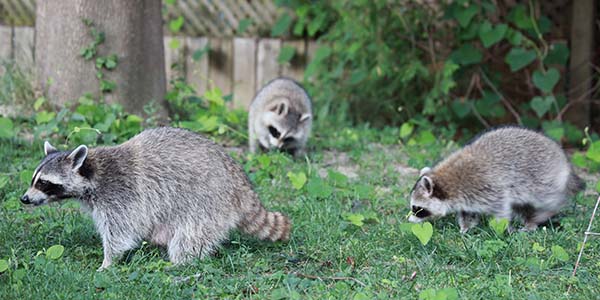
Raccoons are nocturnal animals that are mostly seen by themselves wandering urban areas tipping garbage cans to find their next meal. However, people have often wondered if raccoons live in groups or packs like wolves do?
Considering the raccoon’s short lifespan of about three years, it is unlikely that raccoons will develop a lasting bond with their family or pack. Usually, they are seen by themselves during the day and only come together to mate before splitting up again for good.
However, there have been instances of raccoons traveling in groups. In these cases, it is unlikely that they will be together for long as well since there are no young to protect and the mating season has ended. Let us explore the raccoon’s social habits and whether or not they travel in packs.
Social Habits: Male Raccoons vs Female Raccoons
Male and female raccoons have differing social habits. Female raccoons are more gregarious than males, which is why they live in larger groups, especially during the rearing season. Related females form tight-knit groups of up to 12 raccoons and these family units will stay together year-round and work together to raise their young.
Male raccoons can either form a loose group of four or solitary depending on the situation and population densities in the area. Raccoons like to stick together in a group during winter or when breeding season comes around. This is to protect themselves from other raccoons that might try to fight them for a chance with the females. Male groups however are not as tight-knit as female groups and tend to break apart from each other more frequently.
Do Raccoons Live Alone?
Raccoons are thought of as mostly solitary animals, coming together only for mating purposes and to raise their young. However, they do live in small groups with other raccoons; these are called a gaze or nursery. Raccoon families tend to be found anywhere between two and eight or more individuals.
Males will usually establish a home range, marking it with bodily secretions, and often overlapping with another male’s territory. Females also protect an established territory, but this may overlap with her mother’s as well as that of any future mates she chooses to have. The size of these territories can vary greatly depending on food availability within the region where she lives.
Do Raccoons Hunt or Travel in Packs?
Raccoons do not generally hunt as a pack like wolves for example; the majority of adult males tend to be solitary foragers and only travel with other members of their species when it is necessary for survival. And that is what raccoons do during winter months, when the weather is cold and food is scarce they will form groups of four and forage together in small packs to find easier sources of food. The smaller groups make hunting much more efficient and the raccoons will usually target prey species that are abundant and easy to catch such as fish, frogs, or turtles.
Raccoons are known to travel with other members of their species during mating seasons. During this period they will usually team up together and fight off any other males that are trying to claim territory or a female that’s ready to mate! or if they are defending themselves against hungry predators that want to eat them (such as coyotes and wolves).

Raccoon Families
Raccoon families usually consist of a mother raccoon, its kits (baby raccoons) who stay with her for about 8 to 12 months but sometimes longer depending on the climate conditions. When a female raccoon is caring for her young, she may allow them to stay with her until they mature which can be up to one year old. Once they reach maturity though, it is time for them all to go out on their own.
The typical size of a raccoon family group is between three to ten individuals with around four being average, although larger families have been reported. The males do not actually join the female’s nursery after they breed. It is the female that cares for and raises their young. The males will either leave or stay solitary throughout this time period.

How Many Raccoons Live Together?
Females form larger groups while male raccoons tend to stick together in smaller groups. If you are seeing more than one raccoon at a time then there is probably only one explanation for this behavior: breeding season! Raccoons are more social during this season and will often spend time with members of their own species to ensure survival. If you ever see raccoons that are not acting aggressively towards each other then they might be related, but it is also possible the two animals are mother and child or siblings.
Female raccoon packs can sometimes get quite big especially if more than one female shares territory with each other during the breeding season. Young raccoons would usually stay with their mom until it is ready to leave the nest and go off on their own and start mating.
Do Raccoons Live in Packs?
Mother raccoons are known to live in family groups especially when they have young children. These are matriarchal groups where the females take turns caring for the young. The only time males join these groups is during the mating season or if they are young enough to still need their mother by their side as protection (they stay with the family until they become mature).
Males on the other hand tend to form smaller packs that consist of up to four raccoons. These may be seen together throughout most months but usually scatter at dawn and dusk when hunting or meeting potential mates. Raccoon families gather mostly after dark even though some members might hunt separately.
Do Raccoons Travel in Pairs?
Female and male raccoon pairs usually only last while the female is nursing her young; however, some of these animals can live together year-round until the mating season rolls around again. They tend to be quite territorial and could display aggressive behavior as unrelated males often kill the young ones of other families in order to increase their own chance of mating.

How Far Do They Travel?
Raccoons usually do not go far from their home range and will stay in a certain territory when they are scavenging, although they can sometimes move up to 10 miles in search of food or mate. Most raccoons will travel within the same area, but they may also roam when breeding season comes.
Raccoon Families in Homes
If you see a raccoon in your home or yard, chances are that there are more nearby. Female raccoons in gestation often find their way in attics of homes where they will deliver and rear their young kits. Mother raccoons usually only travel alone when they’re scavenging or making their way back to a den that’s further away from where you spotted them initially. If you see one raccoon, the best thing to do is leave it be and check your property thoroughly afterward because if there was one on your property then chances are there will be others too!

Problems Caused by Raccoon in Homes
A mother raccoon raising her young in your home is dangerous for your family and pets. If you find a nursing female, she will be quite protective of her babies and may attack anyone nearby. Their feces also carry several diseases that can make humans sick.

Raccoons in Homes: Prevention and Removal
One way to prevent a raccoon from coming back is by sealing off entry points like vents, holes, loose roof shingles, or broken pipes on your house. You can also use repellents that are specially designed for these animals but only after you have checked if there are any babies present inside first!
A professional should be called immediately when you spot one of these mammals because they know exactly how to handle it without causing harm to the raccoon. When dealing with baby raccoons always keep an eye out for the mother too as she may return looking for her young at any time!
Raccoon Removal
Raccoon removal from homes is a complex and tedious process that involves using humane cage traps and releasing the animals as far from your home as possible. This process requires a qualified and experienced trapper who knows how to operate the traps and remove animals safely and humanely.
Raccoon removal should only be handled by professionals because these animals can carry diseases like raccoon rabies and roundworm which can be transmitted to humans if they are bitten or scratched. Raccoon feces can also carry parasites which is another reason why you should never try trapping these animals yourself!
Need Professional Raccoon Removal?
If you have a raccoon in your home, call the professionals at AAAC Wildlife Removal . We will find out where the animal is living and remove it efficiently without harming it. Contact us now for more information about our services and how we handle wildlife problems safely every time!
Originally published on https://aaacwildliferemoval.com/blog/raccoons/do-raccoons-travel-in-packs
We proudly serve Collin and Rockwall counties
Counties: Collin, Rockwall
Cities/Towns:

Call or Text Anytime
Click For A Quote
- All Publications
- Priorities Magazine Spring 2018
- The Next Plague and How Science Will Stop It
- Priorities Magazine Winter 2018
- Priorities Magazine Fall 2017
- Little Black Book of Junk Science
- Priorities Magazine Winter 2017
- Should You Worry About Artificial Flavors Or Colors?
- Should You Worry About Artificial Sweeteners?
- Summer Health and Safety Tips
- How Toxic Terrorists Scare You With Science Terms
- Adult Immunization: The Need for Enhanced Utilization
- Should You Worry About Salt?
- Priorities Magazine Spring 2016
- IARC Diesel Exhaust & Lung Cancer: An Analysis
- Teflon and Human Health: Do the Charges Stick?
- Helping Smokers Quit: The Science Behind Tobacco Harm Reduction
- Irradiated Foods
- Foods Are Not Cigarettes: Why Tobacco Lawsuits Are Not a Model for Obesity Lawsuits
- The Prevention and Treatment of Osteoporosis: A Review
- Are "Low Dose" Health Effects of Chemicals Real?
- The Effects of Nicotine on Human Health
- Traditional Holiday Dinner Replete with Natural Carcinogens - Even Organic Thanksgiving Dinners
- A Primer On Dental Care: Quality and Quackery
- Nuclear Energy and Health And the Benefits of Low-Dose Radiation Hormesis
- Priorities in Caring for Your Children: A Primer for Parents
- Endocrine Disrupters: A Scientific Perspective
- Good Stories, Bad Science: A Guide for Journalists to the Health Claims of "Consumer Activist" Groups
- A Comparison of the Health Effects of Alcohol Consumption and Tobacco Use in America
- Moderate Alcohol Consumption and Health
- Irradiated Foods Fifth Edition
- Media/Contact
- Write For Us
Are Raccoons More Like Dogs or Cats?
Related articles.
My wife and I left the city of Seattle and moved into a small suburb. Not too long ago, a family of trash pandas raccoons walked across our backyard deck, like they owned the place. (See photo.)
This got me thinking. Are raccoons more like dogs or cats? They certainly exhibit both kinds of behaviors. On the one hand, like dogs, they live in packs. But not always. Raccoons, especially males, go through a phase when they live alone , just like most cats. Other research has shown that raccoons form sex-specific groups . That's right; raccoons have "boys only" and "girls only" clubs.
Raccoons are extremely intelligent, which (sorry cat lovers) makes them a bit more like dogs. ( Dogs have twice as many neurons in their cerebral cortices than cats, the parts of the brain associated with higher level thinking.) Raccoons are omnivores, and though dogs are technically carnivores, they'll eat just about anything you give them. Cats, on the other hand, are picky eaters.
So, that settles it. Raccoons are like dogs? Well, sort of. The term "trash panda" really is accurate; raccoons are most similar to bears.
Raccoons and Bears Share a Common Ancestor
Along with dogs and cats, raccoons are part of the order Carnivora . However, an evolutionary tree shows that they are most closely related to bears, sharing a more recent common ancestor with these burly beasts than with either of our domesticated friends.
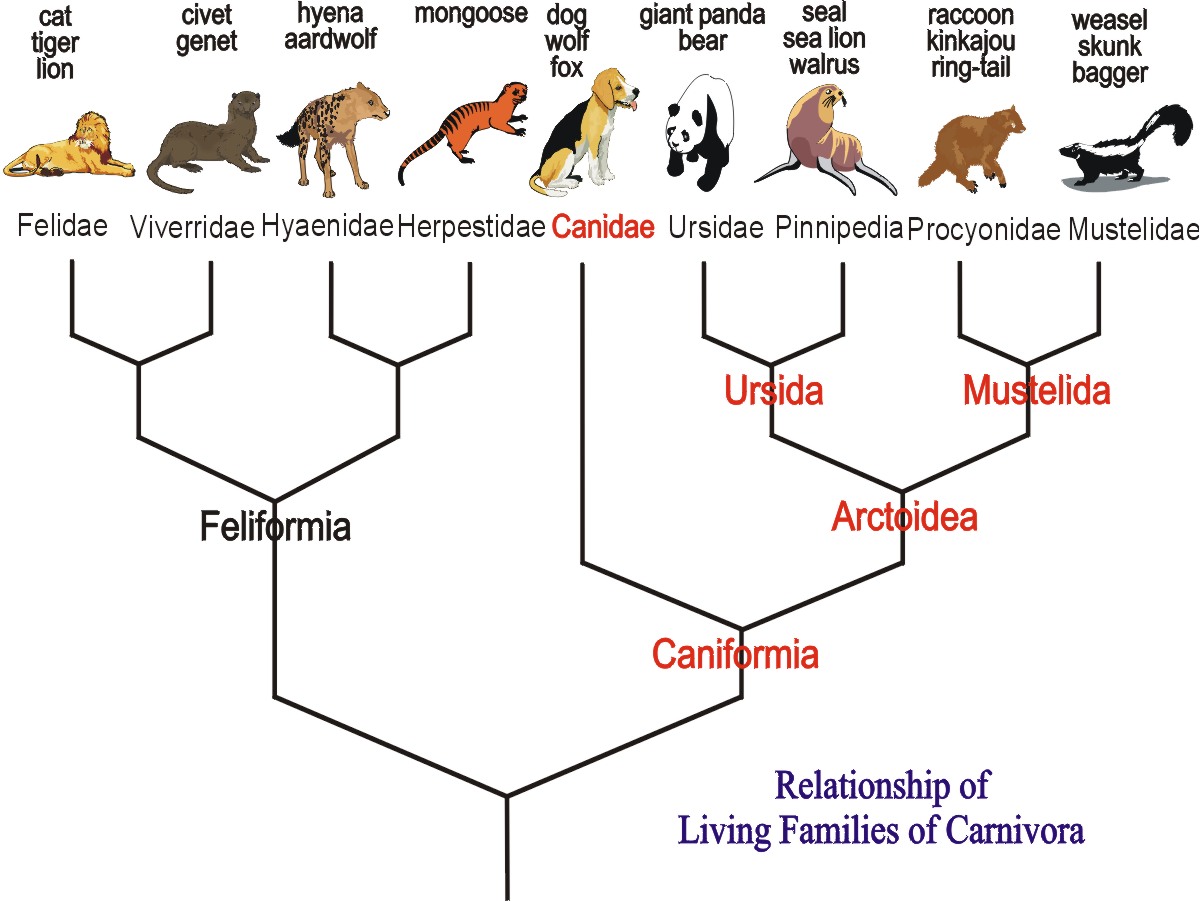
Source : GWU
Notice that the evolutionary tree splits earliest between cat-like species ("Feliformia") and dog-like species ("Caniformia"). So, the dog-cat division happened early in carnivore evolution. Raccoons arose within the Caniformia suborder. So, technically, the answer to our question is that raccoons are more "like dogs." But there's more to the story.
As evolution progressed, the ancestors of modern-day dogs and the ancestors of modern-day raccoons went their separate ways. Then, about 40 million years ago, the tree split again, with raccoon-like animals going one way and bear-like animals going another. ( Here is a tree depicting the evolution of just bears and raccoons.)
There's a Bear in the Woods
As it so happens, a few days after we bought our new house, a black bear wandered through our yard. (It climbed over our fence and its sizable rear end bent it.) Little did we know that the raccoon family that made an appearance a few months later were cousins. Distant cousins, but cousins nonetheless.
View the discussion thread.

By Alex Berezow, PhD
Former Vice President of Scientific Communications
Dr. Alex Berezow is a PhD microbiologist, science writer, and public speaker who specializes in the debunking of junk science for the American Council on Science and Health. He is also a member of the USA Today Board of Contributors and a featured speaker for The Insight Bureau . Formerly, he was the founding editor of RealClearScience.
Latest from Alex Berezow, PhD :
- Search Please fill out this field.
- Manage Your Subscription
- Give a Gift Subscription
- Newsletters
- Sweepstakes
- Culture and Lifestyle
- Activities and Entertainment
- Outdoor Recreation
- Animals and Wildlife
How To Keep Raccoons Away, According To An Expert
Here’s how to keep raccoons away from your home and garden.
:max_bytes(150000):strip_icc():format(webp)/Arricca-Elin-SanSone-ecbb9f10444d4097a972dc07d77f56ec.jpg)
Understanding Raccoon Behavior
Signs of raccoon activity, creating a raccoon-proof environment.
Getty Images / Diane Jackson
With their prominent “bandit” masks, furry ringed tails, and stout bodies with a waddling walk, raccoons are easy to spot. These mammals are found across North America, residing in every kind of habitat from hardwood forests to coastal plains to swamps. Unlike some wildlife species, raccoons ( Procyon lotor ) thrive even in urban areas.
One reason for their success is because raccoons are clever and adaptable. “Raccoons are excellent climbers and can grasp and manipulate objects with their feet,” says Sheldon Owen, PhD, wildlife extension specialist at West Virginia University . “But they can be destructive. If a raccoon finds a one-inch crack in siding, for example, it will dig, chew, and figure out how to pull off boards to expand the hole for a new den.”
- Sheldon Owen, PhD, is a wildlife extension specialist at West Virginia University .
Raccoons are opportunistic feeders , chowing down on whatever’s readily available. While they’re mostly nocturnal, it’s not unusual to see them out foraging during the day, says Owen. They eat plant and animal matter including acorns, seeds, fish, frogs, crayfish, eggs and young birds, insects, berries, and occasionally, carrion. They’re also notorious for digging through garbage cans, raiding chicken coops, and ripping apart vegetable gardens. They’re geniuses at exploiting new food sources and will teach their tricks to their babies.
While raccoons are fascinating creatures to observe (when they’re not tearing things up), you don’t want them close to or inside your home because they can carry fleas, ticks, and lice and several serious diseases and parasites. “They’re a common carrier of rabies ,” says Owen. They also may transmit canine distemper , which can affect unvaccinated dogs and wild canids, as well as ferrets, weasels, and skunks.
When nesting under your porch or deck or in a crawlspace, chimney, or attic, raccoon waste will accumulate and cause odors. In addition, raccoon feces may contain Baylisascaris roundworm eggs , which can infect humans and lead to nerve damage or blindness. Kids often are more likely to become infected because they play on the ground and may put hands in their mouths.
Why Do Raccoons Wash Their Food?
Raccoons often are seen rinsing off their food, or dipping it into water before eating, if they’re near a water source. While it seems like these animals are “washing” their food, it’s actually thought that water helps make their paws more sensitive to what they are feeling, says Owen.
This may help raccoons more easily identify edible and non-edible objects, especially when foraging in streams. However, washing isn’t mandatory, and a raccoon still will dine if there’s no water nearby. It’s just another way these clever creatures have adapted to every environment they inhabit.
Read on to tell if you have a raccoon problem and how to keep them away:
If you find your trash can upended and garbage strewn everywhere, there’s a good chance a raccoon is to blame, says Owen. You also may see their tracks , which have long, slender toes and claw marks with foreprints about 3 inches long and hindprints that are 3 to 4 inches long.
You may see raccoons coming and going, or you may hear them whining or growling when they’re living in spaces such as your chimney or attic. Or you may notice nesting materials blocking chimneys, under your deck, or in other sheltered areas on your property such as a shed.
Prevention Methods
There are no effective repellents or devices that frighten away raccoons. “When they learn there’s no real threat and there’s still food available, raccoons ignore these methods,” says Owen.
Removing potential food sources and excluding raccoons from an area are the most effective means of keeping them away from your home. If they’re not causing damage and are keeping their distance, it’s fine to leave them be. But if they are too close for comfort, you can make your yard less appealing to them, with these tips:
- Seal openings . “Raccoons use multiple dens throughout the year, so look for holes in and around your home, shed, or crawlspace that could be enlarged to provide access to a warm, safe spot for a new den,” says Owen.
- Cut back limbs that touch the house , which makes entry to your attic too easy.
- Install chimney caps.
- Don’t leave pet food bowls outside . That’s a sure way to invite not only raccoons but other unwanted guests such as mice , opossums , and skunks .
- Keep poultry indoors at night , and seal any gaps. Raccoons can reach through and pull chickens out through holes.
- Remove birdfeeders if you suspect a racoon is raiding them .
- Keep trash in cans with lockable lids, or use a bin with a lockable lid . “Raccoons are stronger than you think and dexterous enough to work bungee cords off a can lid,” says Owen.
Keep your pet’s vaccines and worming medications up-to-date since they can be exposed to rabies, canine distemper and other parasites from raccoons and their waste.
Professional Assistance
For persistent raccoons or a mom and babies denning in your home, you may need to hire a nuisance wildlife specialist for removal , says Owen. Expert help is recommended because a mom, if cornered, likely will defend her offspring. You also don’t want to leave babies behind accidentally because they will die inside your home if you remove the mother.
Remember that raccoons can transmit rabies to people and pets and distemper to unvaccinated pets , so they should never be handled alive (or deceased). If you find a raccoon that is acting disoriented, lethargic, or aggressive, or is stumbling or curling up and sleeping in exposed areas near your home, contact your state’s wildlife department .
Related Articles
Scrap the trap when evicting wildlife
Trapping animals and relocating them isn't the best option
A raccoon in the chimney, a groundhog under the shed, a skunk under the back porch … when confronted with wildlife living up-close in their own homes or backyards, well-meaning but harried homeowners often resort to what they see as the most humane solution—live-trapping the animal and then setting them free in a lush, leafy park or other far-away natural area.
It sounds like a good idea, but the sad truth is that live-trapping and relocation rarely ends well for wildlife, nor is it a permanent solution. Why isn’t this approach as humane and effective as it seems and what other options do caring people have when wildlife conflicts arise? Read on for the answers—and some solutions!
Wild nursery
Between March and August, raccoons, skunks, groundhogs and other animals may choose shelter in, around and under a home because they need a safe place to bear and rear their young. Well-adapted to urban life, they will opt to nest in safe, quiet and dark spaces—such as an uncapped chimney or under the back porch steps—if given the opportunity. You may only see one animal, but during this time, assume that any wild animal denning or nesting around a home is a mother with dependent babies.
Unintentional orphans
Not recognizing that dependent young may be present when live-trapping and relocating wildlife during the spring and summer often has tragic consequences. Wild animal babies are unintentionally orphaned and too often die of starvation, because their mother is trapped and removed.
The dangers of relocation
Although homeowners mean well, wild animals do not “settle in” quickly to new surroundings, no matter how inviting that habitat may seem to humans. In fact, the odds are heavily stacked against any animal who is dumped in a strange park, woodland or other natural area.
A 2004 study of grey squirrels who were live-trapped and relocated from suburban areas to a large forest showed that a staggering 97 % of the squirrels either soon died or disappeared from their release area. Take it from the animals' point of view:
- Suddenly in an unfamiliar place, they are disoriented and don’t know where to find shelter, food or water.
- They're in another animal’s territory and may be chased out or attacked.
- They don’t know where to go to escape from predators.
- They may desperately search for babies that they are now separated from.
In the meantime, their helpless young are slowly dying. Even if the orphaned young are discovered, rescued and taken to a wildlife rehabilitator to be reared, it remains a bleak situation for both mother and offspring; one that could have been easily prevented.
No matter how big or small your outdoor space, you can create a haven for local wildlife. By providing basic needs like water, food and shelter, you can make a difference in your own backyard.
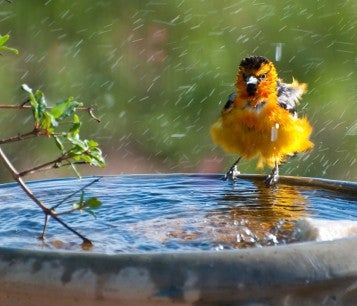

Patience, it's a virtue
If you discover a wildlife family nesting in or around your home, the ideal response is patience.
If the animals are not causing damage or harm, you can be assured that once the young are big enough to be out and about, the birth den will have served its purpose. The denning and nesting season is short. Be tolerant and wait a few weeks until the family has vacated the premises and you’ll prevent orphaning of the young altogether. Then you can make repairs to prevent animals from moving in again.
If you can’t wait for the animals to leave on their own, the next best strategy is humane eviction—gently harassing the animals so they’ll move to an alternative location. Wild animals have a sophisticated knowledge of their home ranges (the area in which they spend almost their entire life). Alternative places of refuge are part of that knowledge or cognitive map. Litters can, and will, be moved if disturbed.
Try using a combination of unpleasant smells and sounds. The size of the denning space and the amount of ventilation will largely influence if such repellents will work. We recommend using rags soaked in a strong smelling substance such as cider vinegar ( not ammonia), lights and a blaring radio during nighttime hours to convert an attractive space (quiet, dark and protected) into one that is inhospitable.
Excluding unwanted guests
Repellents provide a temporary solution at best. To permanently prevent animals from using those same spots in the future, you’ll need to seal off any denning areas. Make sure all animals are out before sealing off any space. Remember, during the spring and summer months, it is extremely likely that the animal denning under your steps or elsewhere around your home is a female with dependent young. Make sure that mother and young are able to remain together to prevent any of them from dying cruel deaths.
If you can find the entry/exit holes, an easy way to determine if the den has been vacated is to loosely cover or fill it with a light material, such as newspaper or insulation. This way the occupant will have to push the obstruction aside to get out or come back in. If the block hasn’t moved for three to four days (and it’s not the dead of winter), the den has been vacated and it’s safe to make repairs.
These suggestions are general guidelines only. Recommended methods for resolving conflicts with wildlife may depend upon additional aspects of the situation and the species involved.
But what if ... ?
When the only other option is killing, we sometimes agree that relocation, which gives the wild animal at least a chance, is acceptable. Much depends on the species involved, the time of year, the area into which relocation occurs and other factors—too many to write a general prescription.
For example, relocating an opossum, an animal that tends to wander all its life and often has no fixed home range (and carries their babies with them), could be seen as more acceptable than relocating a squirrel in mid-winter. For squirrels, it is a death sentence, since they would no longer have access to their food cache on which they survive the winter. There are times and circumstances when relocation is surely a better alternative than certain death.
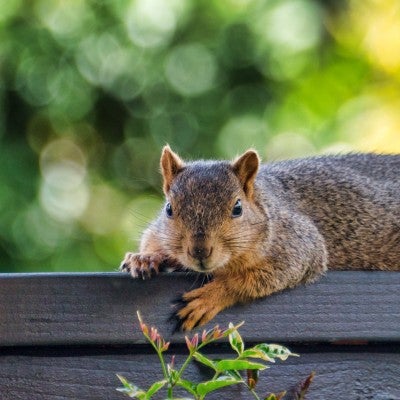
Every day, more and more wildlife habitats are lost to the spread of development. Your gift can help create more humane backyards to protect all animals.

Do Raccoons Travel In Packs?
Raccoons are very solitary creatures. After the males mate with multiple females, they abandon them and search out other babies from other fathers to kill to make their children a greater chance of survival. This makes most males unlikely to hang around each other very much. Females are also solitary but will raise their children and protect them until they are ready to leave the nest and go off on their own. The mother will then go get pregnant again and have another litter and the cycle of life goes on and on. If you want to get rid of the raccoons in your home, contact Raccoon Removal Toronto to solve your raccoon problem!
Raccoons being solitary creatures tends to be a good thing as when you get a raccoon infestation on your property or in your home it will normally be one male, one female or one female with babies that can not fend for themselves for most of their upbringing. This makes it easier to get rid of them but also makes it dangerous if another male enters the den of a male living in your attic. They will fight and there will be a lot of blood and likely a dead raccoon in your attic that the raccoon who now owns the den will not bother to remove. It will simply continue using the den and pooping everywhere and urinating everywhere and causing your family innumerable health problems.
So if you have a raccoon problem then the best thing to do is to call the professionals. At Raccoon Control we can handle your raccoon problem with ease. We can have that raccoon out of your home safely and humanely and without harming any babies. Our technician will first do an inspection of the property to find entry points and then locate the main entry point. They will then do an internal attic inspection for babies and remove them. He will then attach a one-way door that allows the raccoon to leave but prevents it from getting back in. This all takes less than a week to get rid of your raccoon! So call now!

- WILD CITIES
How raccoons became the ultimate urban survivors
“Trash pandas” are infamous for living among us, but why are they so good at it?
In the early 1900s, American scientists in the burgeoning field of animal psychology had a grand plan: Bring raccoons , a plentiful North American mammal known for its cleverness, into the lab for experiments on animal intelligence.
They quickly gave up when the dexterous animals with primate-like paws kept breaking out of their cages. The scientists essentially said, “We’re throwing up our hands and going back to rats and pigeons,” chuckles Sarah Benson-Amram , a behavioral ecologist at the University of British Columbia in Vancouver. That’s why, she says, “we’re now only scratching the surface of raccoon cognition.”

Found in most U.S. cities, the masked omnivores are infamous for breaking into trash cans, homes, and other human-made structures. So far, Benson-Amram’s research suggests raccoons’ smarts are contributing to the species’ expansion into suburban and urban areas throughout the North American continent. (Read how wild animals are adapting to city life in surprising ways.)
She and her colleagues have performed various experiments in which they present wild and captive raccoons with demanding tasks, such as learning to push multiple levers to receive a treat. In almost every instance, the animals have defied the team’s expectations—often by coming up with a solution that the scientists hadn’t even imagined.
“They’re endlessly fascinating—every study we do, I’m struck by their curiosity and their willingness to explore things,” Benson-Amram says.
Though raccoons are beloved pop icons to many—it’s easy to find “trash panda” merchandise online—others consider the animals nuisances, especially when they’re rummaging through the garbage.
For that reason, Benson-Amram and colleagues recently launched the University of British Columbia’s Urban Wildlife Project , in which they’ll place 30 GPS collars on raccoons and 10 collars on coyotes throughout Vancouver to study how the animals adapt to and use urban environments. The team will also deploy remote cameras throughout the city to observe the creatures and how they interact with people.
For Hungry Minds
The goal, she says, is to “hopefully lead to a greater co-existence between humans and wildlife.”
City slinkers
Beyond their intelligence, raccoons possess many qualities suited to city life, from their nocturnal nature, which helps them avoid run-ins with people, to their wide-ranging diet.

For instance, they’ll eat pretty much anything, from fruit to insects to frogs to junk food.
Some raccoons will spend their entire lives in a three-block radius around a dumpster, subsisting off that one artificial food source, says Suzanne MacDonald , a psychologist at York University in Toronto and a National Geographic Explorer who studies urban raccoon cognition.
That’s a big contrast from wild raccoons, which are territorial animals with ranges between 1.5 square miles and nearly 10 miles. “If you can keep alive from one dumpster, that’s your home range. All you have to do is eat, drink, and mate,” she says.

Another boon for raccoons: As temperatures warm worldwide due to climate change, raccoons are predicted to spread even further north into the U.S. and Canada, as well as within countries where they’ve become invasive species , such as Japan and Germany.
Raccoons also have sensitive five-fingered paws for grasping and feeling things, such as slippery aquatic prey. Possibly for that reason, raccoons are especially numerous in temperate cities built around rivers, such as Toronto, Vancouver, and Chicago, MacDonald says. Those flexible paws also give them a unique edge in exploiting the human environment, whether it’s wiggling into the backseat of a car or climbing a skyscraper . “Coyotes can’t live in your attic or garage,” she says, but raccoons can.

Of course, that combination of curiosity and innovativeness can often lead to new food sources that a less timid animal would likely never discover. (Read National Geographic 's series on urban wildlife, “Wild Cities.”)
In a 2017 study , Lauren Stanton, then a Ph.D. student in Benson-Amram’s lab, presented captive raccoons with the Aesop’s Fable test, a classic measure of intelligence. In the experiment, an animal must drop stones into a water-filled cylinder to raise the fluid level and make floating treats—in this case, marshmallows—rise to the surface.
Not only did two raccoons correctly drop the stones, a third changed her strategy entirely and came up with her own solution by knocking over the cylinder to get to the marshmallows—an example of the species’ ability to think outside the box.
“They demonstrated unique and flexible ways of getting the marshmallow reward out that have not been observed in other species—and that I did not anticipate myself,” says Stanton.
The making of an “urban warrior”
Though scientists agree that raccoons are naturally well suited to urban life, a thornier question is whether urban raccoons are evolving over the generations to be smarter than their rural kin. For instance, MacDonald’s research has shown that raccoons in downtown Vancouver can open a trash can secured with a bungee cord , while those in rural environments cannot.
“My hypothesis is that they’re evolving and the urban environment fits their natural characteristics,” MacDonald says. It’s like taking an animal “that’s adaptable and making it even more into an urban warrior.” (See how urban raccoons can escape trash cans.)
Benson-Amram says it’s too early to say whether raccoons are evolving through natural selection because of city life . But it’s entirely possible our attempts to deter them, such as designing raccoon-proof trash cans, are “actually creating smarter animals, because we’re presenting them with increasingly difficult problems to solve.”
For instance, MacDonald recently advised the city of Toronto on a new line of raccoon-proof trash cans. The receptacles have a lever that can be opened only with an opposable thumb, which raccoons lack. “You can’t outsmart them,” she says. “We have to do something only our hands do.”
It’s also not always true, however, that urban raccoons are cleverer than their country counterparts. In urban and rural areas around Raleigh, North Carolina, Blake Morton has set up several experiments to measure the mammal’s innovativeness.
You May Also Like

Even if you think raccoons are cute, feeding them is not

How our actions are making raccoons smarter

Wild animals are adapting to city life in surprisingly savvy ways
One test involves suspending cups filled with pet food from a tree using a string. Some of the cups are easy for raccoons to pull up from a branch, while others have smoother strings and are harder to grab. Using camera-trap video, Morton observes how raccoons deal with the challenge.
“What we find is that they’re really willing to try out new things and are good problem solvers—up to a certain point,” says Morton, a comparative psychologist at the United Kingdom’s University of Hull. For instance, when tackling the more challenging puzzles, raccoons tend to give up within about 30 seconds, then leave.
“It’s surprising they don’t stay to think about it a little longer,” as primates often do when given similar puzzles, he says. It may be because the animals simply know there are other, easier-to-get food items available—possibly another example of their innovativeness and adaptability.
Even more surprising is that so far, urban and rural raccoons have shown no difference in the experiment.
“Just being in an urban setting is not a guarantee,” he says, that an animal will learn new skills.
Living with “trash pandas”
Even if they’re adapting to it, city life can be tough for raccoons. Many get hit by cars in their first year of life.
What’s more, mother raccoons, which birth between two and five kits each spring, often face the challenge of finding multiple dens in which to house their young. In suburbs and cities, this often means people’s homes.
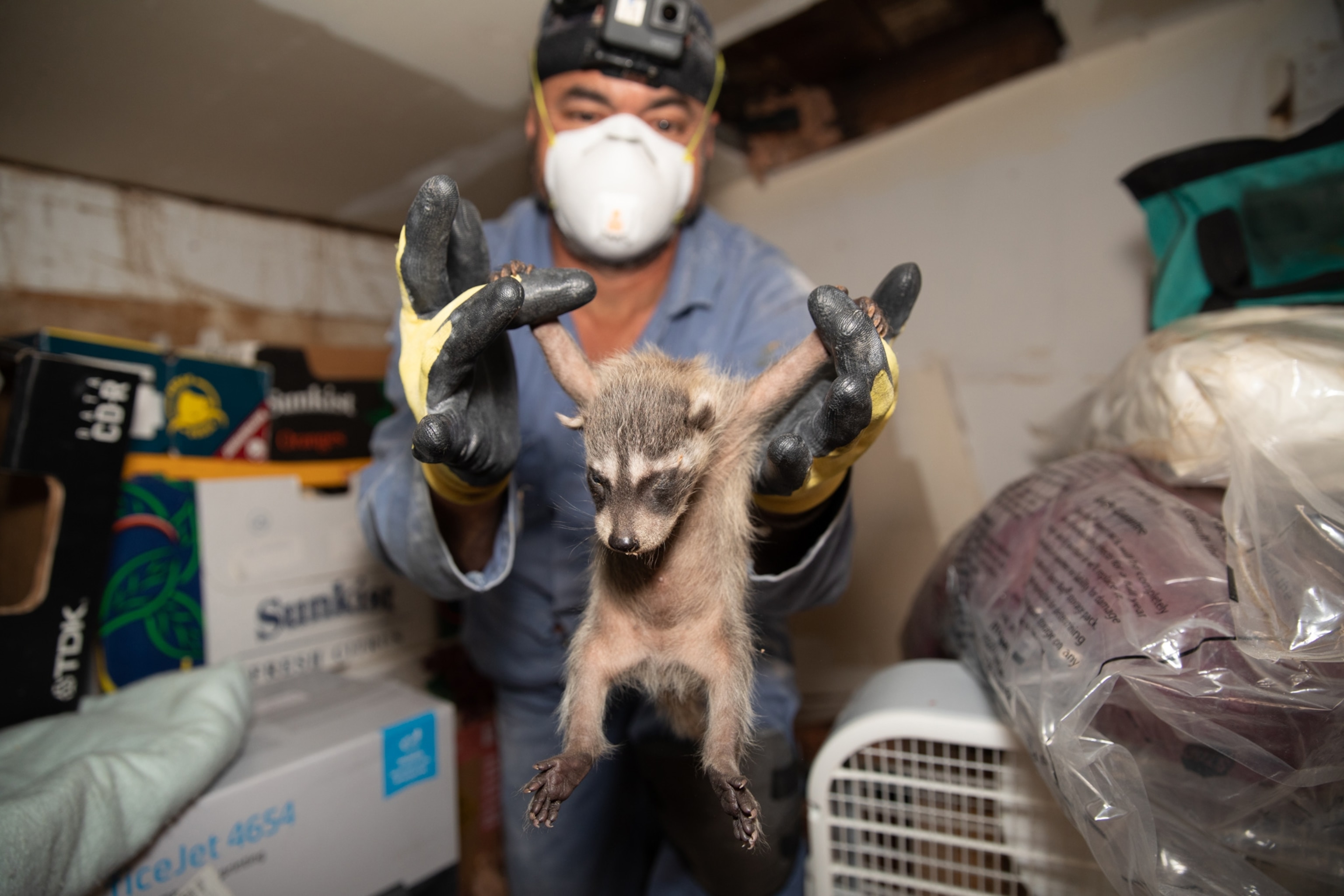
That’s why, in recent years, a handful of wildlife-rescue providers across the U.S. have adopted a strategy in which animals such as raccoons, bats, or squirrels are extricated safely from buildings , reunited with their young (if there are any), and prevented from accessing the same building again, says John Griffin , senior director of urban wildlife programs at the Humane Society of the United States in Washington, D.C.
The Humane Society often educates communities on why it’s more ethical to take this so-called eviction-exclusion approach , instead of trapping and killing the animals.
Those involved in these efforts have seen firsthand the lengths raccoon mothers take to shelter their young, such as shimmying under roof shingles or squeezing through spaces smaller than four inches. “It kind of blows me away, the kind of things they can climb and the spaces they can access,” Griffin says. Combined with their intelligence and ability to manipulate objects, raccoons are very “adept at using the human-built environment to their advantage.” (See more photos of urban wildlife.)
A well-known advocate of the eviction-exclusion approach is Junio Costa, who owns Mr. Raccoon , a no-kill wildlife-removal service in the San Francisco Bay Area.
A typical call involves a raccoon mother denning in an attic, chimney, or crawl space. Costa, who has a background in construction, will first find the entry point through which the mother entered the building. After locating the animals, he’ll then safely remove the young and place them in a box next to the entry point. Before long, mom will return and move the babies to another den. Then, Costa will seal off the entry point to prevent the family from returning.
However, he says, many people still elect to trap and kill, which is cheaper than his services.
“Raccoons are trying to survive like everybody else,” says Costa. “We can share our space—we need to respect them.”

Related Topics
- URBAN WILDLIFE
- URBAN ECOLOGY
- WILDLIFE PHOTOGRAPHY
- ADAPTATIONS

How this photo turned a reclusive mountain lion into a Hollywood icon
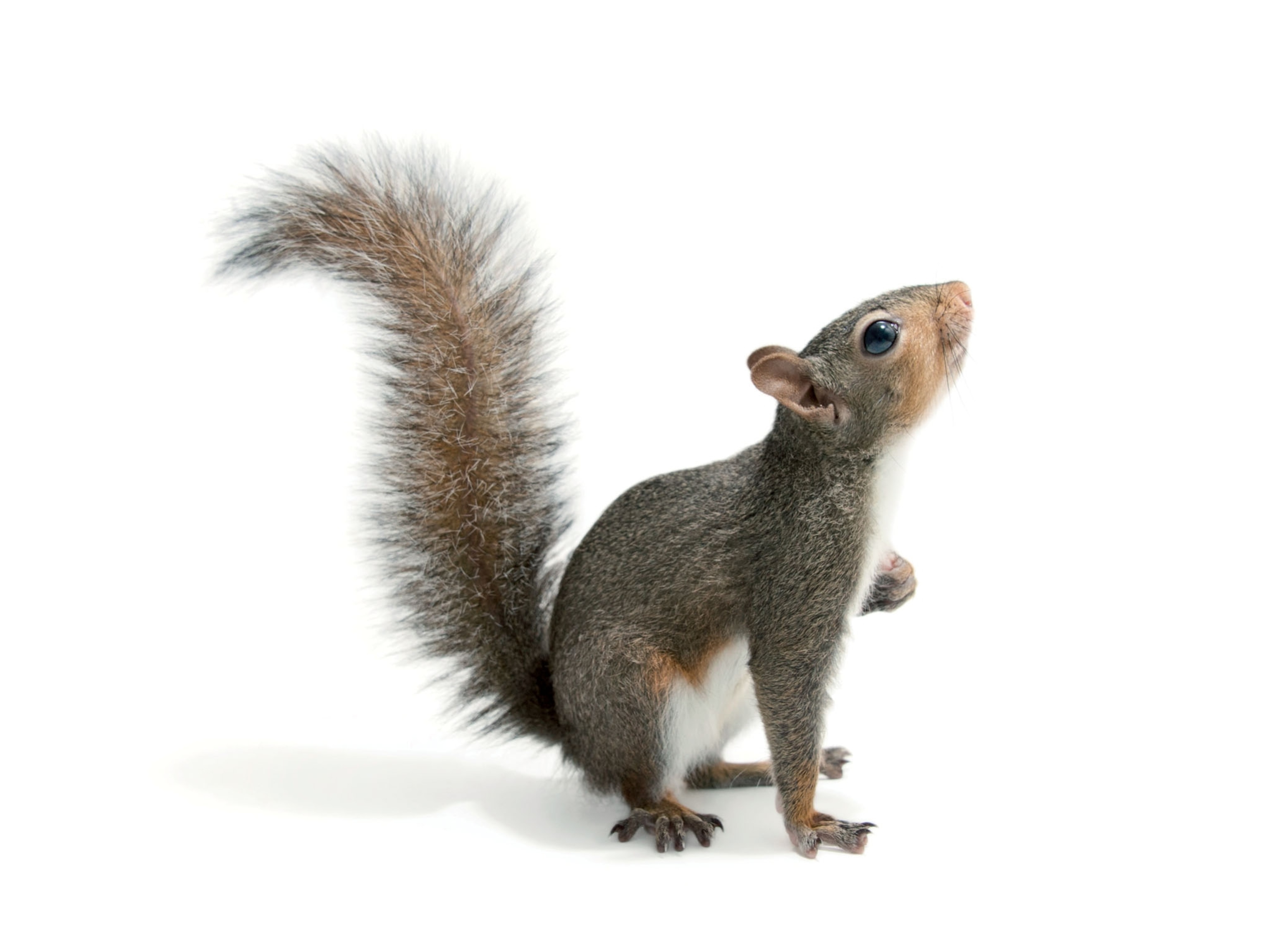
Squirrels Were Purposefully Introduced to American Cities

On Monkey Mountain, this rare species has found an oasis in the big city

How rats became an inescapable part of city living

Were you on team orca? Why we wanted nature to 'fight back' in 2023
- Environment
- Perpetual Planet
History & Culture
- History & Culture
- History Magazine
- Mind, Body, Wonder
- Terms of Use
- Privacy Policy
- Your US State Privacy Rights
- Children's Online Privacy Policy
- Interest-Based Ads
- About Nielsen Measurement
- Do Not Sell or Share My Personal Information
- Nat Geo Home
- Attend a Live Event
- Book a Trip
- Inspire Your Kids
- Shop Nat Geo
- Visit the D.C. Museum
- Learn About Our Impact
- Support Our Mission
- Advertise With Us
- Customer Service
- Renew Subscription
- Manage Your Subscription
- Work at Nat Geo
- Sign Up for Our Newsletters
- Contribute to Protect the Planet
Copyright © 1996-2015 National Geographic Society Copyright © 2015-2024 National Geographic Partners, LLC. All rights reserved

Do Raccoons Live Or Travel In Packs?

Select Your Animal

Raccoons Raccoon Removal Information & How-To Tips

Squirrels Squirrel Removal Information & How-To Tips

Opossum Opossum Removal Information & How-To Tips

Skunks Skunk Removal Information & How-To Tips

Rats Rat Removal Information & How-To Tips

Mice Mouse Removal Information & How-To Tips

Moles Mole Removal Information & How-To Tips

Groundhog Groundhog Removal Information & How-To Tips

Armadillos Armadillo Removal Information & How-To Tips

Beaver Beaver Removal Information & How-To Tips

Fox Fox Removal Information & How-To Tips

Coyotes Coyote Removal Information & How-To Tips

Birds Bird Removal Information & How-To Tips

Bats Bat Removal Information & How-To Tips

Snakes Snake Removal Information & How-To Tips

Dead Dead Animal Removal Information & How-To Tips

Others Other Wildlife Species Information & How-To Tips
Wildlife Removal is the largest and most trusted wildlife control company in the United States. We service over 500 locations. Operating 24/7/365.
Useful Links
- Click to learn about our services
- Click to see our prices for year 2020
- Click to see our 500+ locations
- Frequently Asked Questions
Our Service Technicians

Example Services
- Humane Wildlife Removal
- Animal Trapping & Relocation
- Animal Prevention & Repair
- Removal of Animals in Attic
- Wildlife Control Education
View all locations
Search Adoptable Animals or Lost & Found Pets
Animal Helpline: 1-855-622-7722
- --> Find a Location
- Toggle navigation

Animal Helpline:
1-855-622-7722.
For all other calls and inquiries see our contact details.
Find a BC SPCA location in your area:
Raccoons have a bad rap for making a mess in pursuit of the perfect meal. They are often labelled dumpster-divers, pond-raiders and garden-destroyers. This behaviour makes them valuable for cleaning up unwanted food from other animals, but gets them into trouble in our backyards.
Got raccoons? Read our best practice sheet on how to handle raccoon problems or remove them from your home (PDF).
Raccoons are not dangerous to people but their feces may contain roundworm eggs that can be. To minimize the risk of disease spread, safely clean raccoon excrement and remove attractants from your property. Access to human food (garbage, pet food or intentional feeding) decreases their fear of humans, and they may become aggressive toward food or injured pets. People often want to help, but they end up killing them with kindness. Feeding raccoons is harmful (PDF) and it is illegal to keep raccoons as pets in B.C.
If a raccoon approaches you, yell, stamp your feet, clap your hands and make noise to scare the raccoon away. This may feel silly, but it is the best way to keep raccoons safe from people. Thankfully, raccoons in B.C. do not carry rabies (like those in Ontario), so this is not a risk to you or your pets.
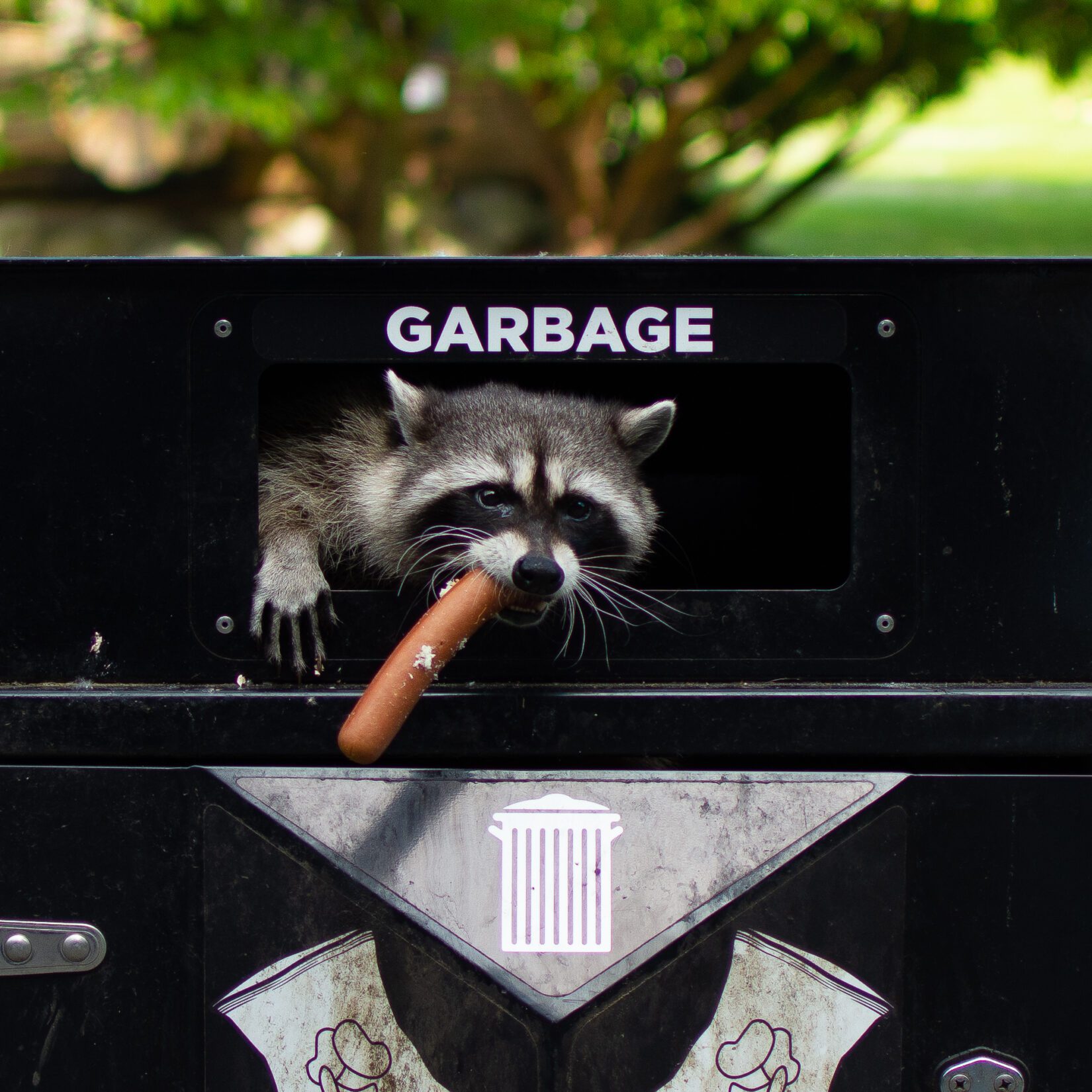
Prevent raccoon problems
- Secure garbage bins and compost
- Pick up fruit fallen on the ground
- Don’t let bird feeders overflow with seeds
- Don’t leave pet food outside, feed pets inside
- Supervise pets outdoors: Keep pets indoors from dusk to dawn
- Keep your cat indoors: The only way to guarantee your cat’s safety is making them an indoor pet or providing an enclosed area.
- Maintain your home: Maintain sheds, garages and access to crawl spaces and attics to prevent raccoons from moving in.
Raccoons often roll up new garden sod while looking for bugs. Use non-toxic diatomaceous earth on your lawn to prevent bugs and raccoons.
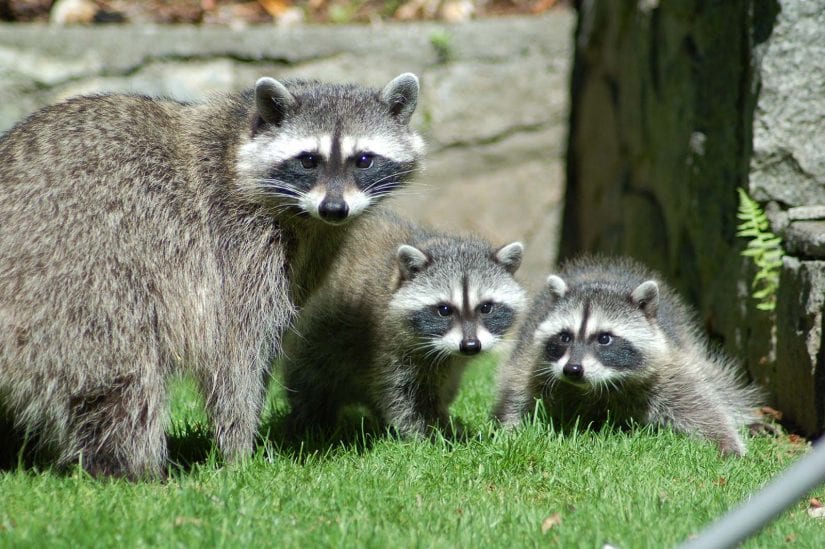
Encourage raccoons to move along
Once a raccoon has moved in, trapping is not the solution. Read our best practice sheet on how to humanely remove raccoons from your home (PDF).
You can encourage them to move along by using mild harassment techniques. To avoid disturbing families with babies, address raccoon problems before March or after August. Harassment techniques should not harm adult or baby raccoons. These do-it-yourself exclusion techniques are inexpensive, but may take some patience:
- Place a flashlight or work light in the den site
- Play a radio (with a talk radio station) near the den site
- Make a raccoon repellent by placing rags soaked with apple cider vinegar in a plastic container. Tape the lid shut and punch holes so the smell permeates.
- Place one or more containers in the den or at entry points. Refill the vinegar every couple of days as needed.
If you have to remove a raccoon, call an AnimalKind company that uses exclusion techniques instead of trapping/relocating or killing.
Find out when AnimalKind is available in your area


IMAGES
VIDEO
COMMENTS
Prevent and Protect. We identify entry points and permanently block raccoons from entering your home. We can install heavy-gauge screening at all potential entry points and advise and consult for insulation repair and attic restoration. Our customer service professionals also provide ongoing assistance to you after your home service is complete.
Do raccoons live or travel in packs? Raccoons use multiple dens throughout their lifetime. Even though male raccoons prefer to lead a solitary life, there are circumstances where they will join other groups in order to survive more easily. In general, raccoons can live as solitary animals, not belonging to a community.
Raccoons are nocturnal animals that are mostly seen by themselves wandering urban areas tipping garbage cans to find their next meal. However, people have often wondered if raccoons live in groups or packs like wolves do?. Considering the raccoon's short lifespan of about three years, it is unlikely that raccoons will develop a lasting bond with their family or pack.
Raccoons are also known rabies vector animals, according to the Centers for Disease Control and Prevention (CDC): "In the United States, rabies is mostly found in wild animals like bats, raccoons, skunks and foxes.". Ward also cautions a raccoon in your house can introduce several diseases. A parasite called raccoon roundworm grows in their ...
Other research has shown that raccoons form sex-specific groups. That's right; raccoons have "boys only" and "girls only" clubs. Raccoons are extremely intelligent, which (sorry cat lovers) makes them a bit more like dogs. ( Dogs have twice as many neurons in their cerebral cortices than cats, the parts of the brain associated with higher level ...
Size and Weight: The adult raccoon is a medium-sized mammal and the largest of the Procyonidae family. It averages 24 to 38 inches in length and can weigh between 14 to 23 lbs., or more, depending ...
Keep poultry indoors at night, and seal any gaps. Raccoons can reach through and pull chickens out through holes. Remove birdfeeders if you suspect a racoon is raiding them. Keep trash in cans with lockable lids, or use a bin with a lockable lid. "Raccoons are stronger than you think and dexterous enough to work bungee cords off a can lid ...
Raccoons typically have what is called a "home range," or an area they stake a claim to. How big the range is will depend on how large the raccoon is, how old it is and where it is. Urban raccoons often have smaller ranges than suburban or rural raccoons. The size of a range is anywhere from 1 square mile to 18 square miles.
It depends whether or not you're talking about a male raccoon or a female raccoon when it comes to answering this question. Male raccoons are quite grumpy and solitary animals. They aren't involved with the rearing of young like the mother is. They just do their business and scamper off, quite like a few other wild animals.
Wild nursery. Between March and August, raccoons, skunks, groundhogs and other animals may choose shelter in, around and under a home because they need a safe place to bear and rear their young. Well-adapted to urban life, they will opt to nest in safe, quiet and dark spaces—such as an uncapped chimney or under the back porch steps—if given ...
He will then attach a one-way door that allows the raccoon to leave but prevents it from getting back in. This all takes less than a week to get rid of your raccoon! So call now! Raccoons unlikey travel in packs. Raccoons are solitary creatures. Males abandon children and kill other children for better survival. Call 647-557-7932.
Keep cats indoors to protect them from raccoons and other predators. Deter raccoons with water sprayed from a hose or motion-activated sprinkler. Enclose pools or try a visual deterrent such as a coyote or alligator decoy. Place a net over small ornamental fish ponds. Raccoons may enter structures via pet doors.
July 22, 2022. • 14 min read. In the early 1900s, American scientists in the burgeoning field of animal psychology had a grand plan: Bring raccoons, a plentiful North American mammal known for ...
The males will usually travel further away from the home range than the females, which is believed to be a natural instinct that prevents inbreeding, and after this point the raccoons will return to being solitary creatures that will not be living or traveling in packs. All about raccoon mating habits
thousands of raccoons die annually from canine distemper, particularly in eastern Canada and the United States. Parasites such as lice, fleas, and ticks are often found on raccoons, but do not appear to be a significant source of mortality. Other raccoon predators include pumas, bobcats, coyotes, foxes, dogs, wolves, Great Horned Owls, and fishers.
A combination of flat feet, short legs and a robust body gives the raccoon a shufling gait as it walks. Raccoons make a variety vocal sounds, including harsh growl or snarl, a rasping scream, a low grunt and a loud purr. Adults average 14-24 pounds may reach 40 pounds. exceed 3 feet in length. "A combination of flat feet, short legs and a ...
A new study in North Carolina caught raccoons on camera foraging with other animals including deer, foxes and flying squirrels and even coyotes. The raccoons' lack of worry about the threat of predation supported researchers' conclusion that raccoons are unlikely prey for coyotes. "Raccoons do not seem to be vigilant toward coyotes when ...
The raccoon's body is stocky, and the animal generally weighs from 10 to 30 pounds. There are records of raccoons weighing in excess of 40 pounds, but this is uncommon. Raccoons are from about 28 to about 40 inches in length. Weight and size may also vary with habitat. Males are usually heavier than females, but the difference is often ...
Raccoon Habitat. Traditionally, raccoons prefer heavily wooded areas with access to trees, water and abundant vegetation. There, they make their dens in the hollow parts of trees as well as abandoned burrows, traveling up to 18 miles to forage for food. Raccoons are extremely adaptable. They are often found in suburban and urban areas, making ...
Long, thick fur gives raccoons a typical gray-brown color, with variations ranging from sienna to silver. Other characteristics include short, slightly rounded ears bordered by white fur, and a long, pointed snout. Most adults weigh between 10 and 20 pounds, with males typically larger than females. Raccoons range in length from 23 to 38 inches ...
Spices: For the same reason why raccoons stay away from peppers, they'll also steer clear of certain spices like black pepper, cayenne pepper, and cinnamon. Sprinkle these natural repellents liberally in the areas where you want to stave off raccoons. Ammonia: Soak cotton balls in ammonia and place them around your property.
Feeding raccoons is harmful (PDF) and it is illegal to keep raccoons as pets in B.C. If a raccoon approaches you, yell, stamp your feet, clap your hands and make noise to scare the raccoon away. This may feel silly, but it is the best way to keep raccoons safe from people. Thankfully, raccoons in B.C. do not carry rabies (like those in Ontario ...